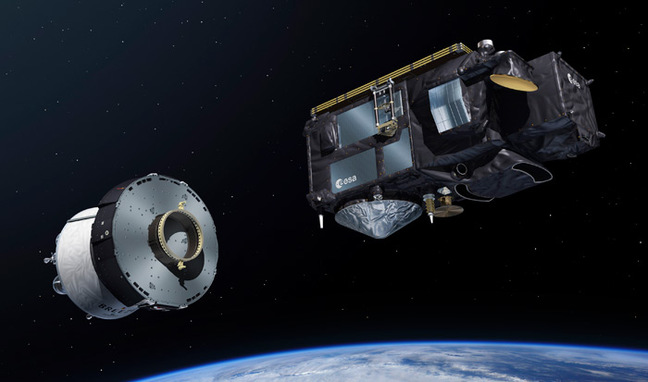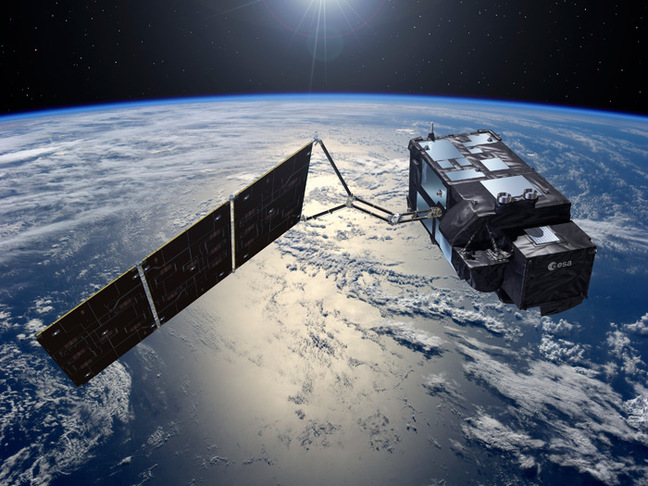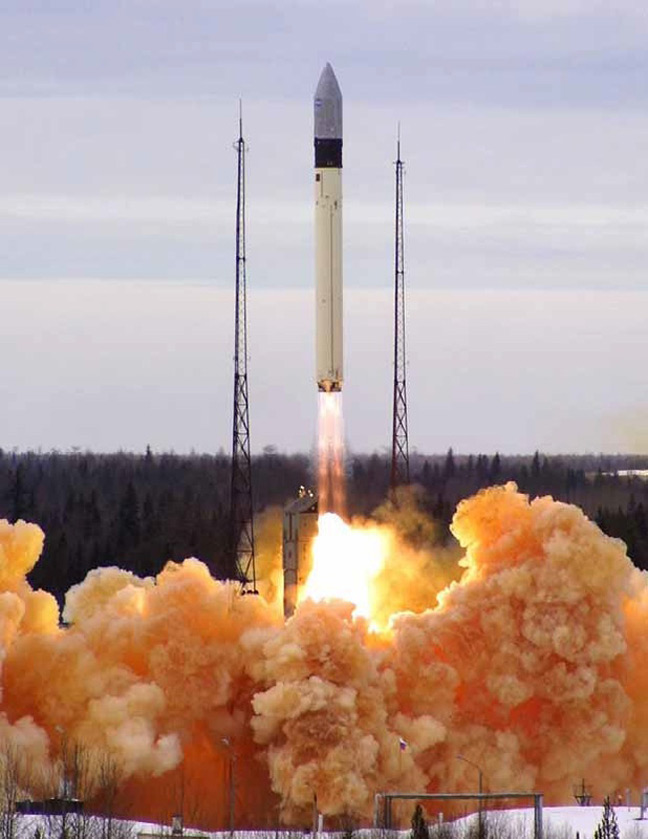This article is more than 1 year old
Europe's Earth-watching satellite streaks aloft
Rapid departure for Sentinel 3-A atop converted ICBM
The European Space Agency's Sentinel 3-A satellite successfully launched yesterday from Russia's Plesetsk Cosmodrome, atop a Rockot converted intercontinental ballistic missile (ICBM) lifter.
In what was almost a "blink and you'll miss it" moment, the Earth-watching satellite departed the launchpad at a considerable rate of knots, thanks to the Rockot's high thrust to weight ratio. While the Rockot - an adapted UR-100N, aka SS-19 - weighs in at 107 tonnes (plus the 1,200kg Sentinel in this case), its four first-stage engines develop 2,080 kN of thrust.
These powerplants burn a hypergolic mix of dinitrogen tetroxide (N2O4 - aka nitrogen tetroxide, or "NTO") and unsymmetrical dimethylhydrazine (UDMH), responsible for the distinctive cloud of orange smoke which billowed from the exhausts.*
The entire flight to separation of Sentinel 3-A from the Rockot's "Breeze" upper stage at an altitude of 815km took 79 minutes.

Sentinel satellite separates from the Breeze upper stage. Pic: ESA
ESA reports: "The first signal from Sentinel-3A was received after 92 min by the Kiruna station in Sweden. Telemetry links and attitude control were then established by controllers at ESA's ESOC operations centre in Darmstadt, Germany, allowing them to monitor the health of the satellite."

A Sentinel 3 keeping a close eye on planet Earth. Pic: ESA
Sentinel 3-A forms part of the Copernicus environmental monitoring network. It will "measure the temperature, colour and height of the sea surface as well as the thickness of sea ice", and monitor land use and the height of rivers and lakes. It's identical twin - Sentinel 3-B is slated to launch next year. ®
Bootnote
*To further demonstrate the Rockot's attractive, if noxious, output, here's a snap of a previous launch at Plesetsk:

As rocket juice aficionados among you will know, liquids such as NTO and UDMH are suitable for long-term storage, unlike cryogenic fuels. That's essential if you need your ICBM arsenal ready for a quick launch. From getting the order to destroy the West, the UR-100N could be in the air in 25 minutes.
An alternative approach is to use solid fuel motors, as seen in the US's Minuteman.
